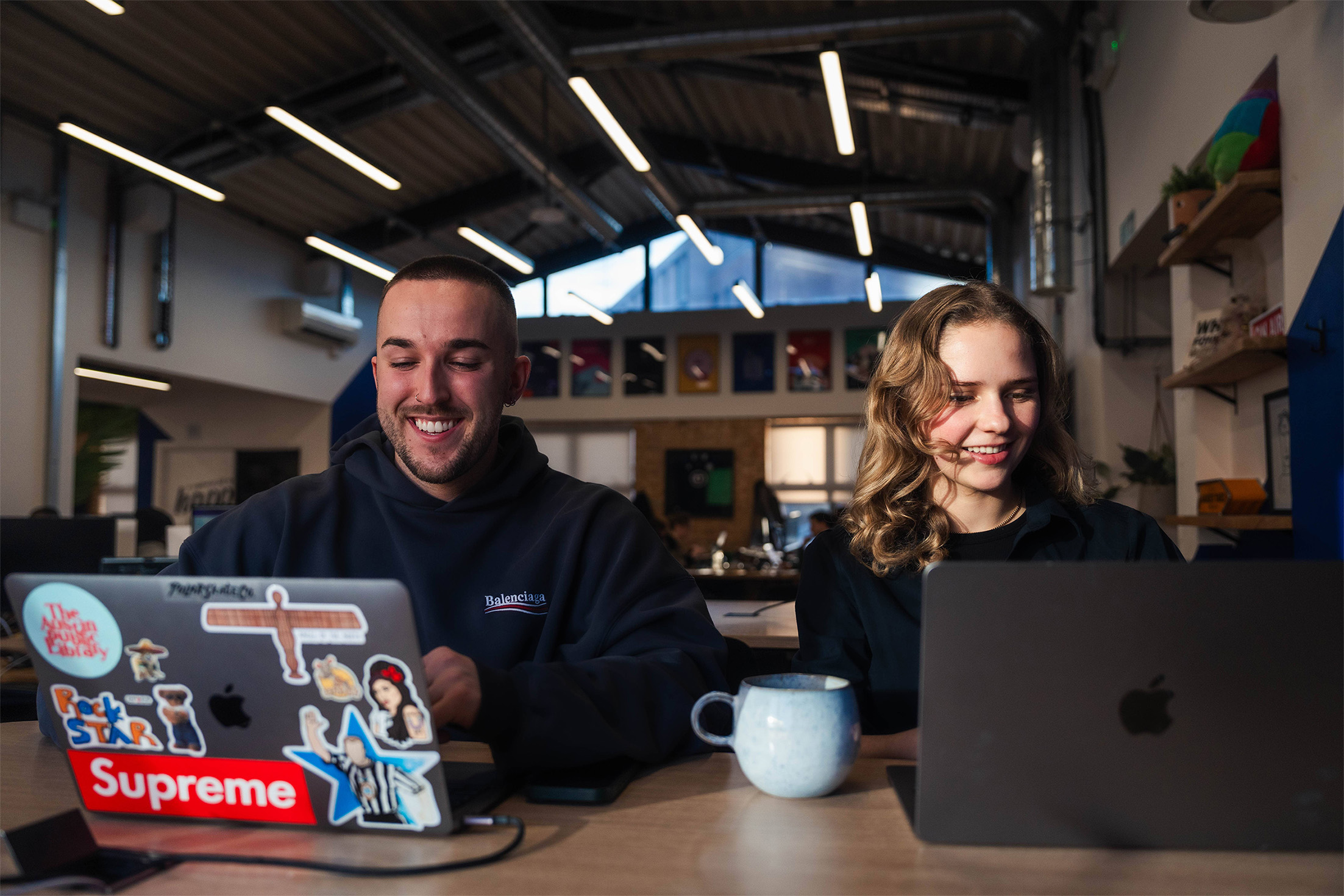We sat down with Amy, Wiser’s Early Talent Recruitment Lead, to get her take on the rapid evolution of early careers hiring and the growing influence of AI. Amy leads on everything from inclusive process design to high-volume recruitment strategy. With AI accelerating change across every stage of the funnel, we asked her how TA teams can adapt without losing the human touch.
The last couple of years have brought a seismic shift in early talent recruitment, and it all starts with two letters: AI.
From an increase in application volumes to the rise of real-time interview-answer generators, the landscape has changed. Fast. But here’s the question no one is asking loudly enough: how do you keep your recruitment process human, efficient, and fair when AI is transforming every stage of it?
"We've seen a 200% increase in application volumes for some of our clients."
With tools like ChatGPT, a candidate can now generate a cover letter in seconds and apply to multiple roles before their first coffee. That’s great for access. But what does it mean for quality?
“You can go onto ChatGPT as a candidate and say, 'finance grad schemes in London' and it would shoot up a full list of firms you could apply to.”
While accessibility is positive in theory, in practice, it means many candidates are applying with little understanding of the roles or organisations. Recruiters, in turn, are drowning in volume, not value.
Using AI to streamline hiring without losing the human touch:
Used well, it can automate the most time-consuming parts of the process: screening CVs, scheduling interviews, and answering FAQs. That frees recruiters up for more impactful, human work.
We’re already seeing AI being used to help remove bias at the top of the funnel, through anonymisation and screening tools. But beware: if your model is trained on biased data, it will replicate that bias at scale. Inclusion by design is critical.
"You can't complain that the candidates have disengaged with you if you've not been engaged with them at every stage."
Smart use of automation enables better engagement, especially when graduate hires might receive their offers up to a year in advance. A personalised comms plan, triggered by your ATS, can maintain that human connection.
Candidates using AI:
According to Arctic Shores, 87% of Gen Z don’t think it’s dishonest to use AI in applications. Over half would feel comfortable disclosing their use of tools like ChatGPT during a hiring process. Some companies are trying to ban AI outright, but that feels both impractical and misaligned with the reality of work today.
"You've actually got platforms starting to come up now where candidates can have a screen reader that will generate the interview answers for them in real time."
Rather than resisting AI, define your stance. Are you okay with candidates using AI tools? If AI will be part of the job, it might make sense to assess how well candidates use it.
AI hasn’t just changed how candidates apply, but it’s changed how they prepare. Candidates can now scrape Glassdoor or ask ChatGPT to simulate their interview questions. If you haven’t refreshed your assessment centre content in years, it’s likely out there already.
"Not necessarily the competencies—your competencies can remain the same. But the way in which you assess them, and your actual task content or the interview questions, should be refreshed."
Regular updates ensure fairness and relevance, helping to protect the integrity of your selection process.
The rise of in-person assessment
While AI dominates early-stage screening, in-person final assessments are making a comeback. It’s easy to see why: cultural fit, presentation, and presence don’t always come through on screen.
"You want them to choose you. They're very likely to not just be applying to you."
In-person touchpoints also give candidates a better feel for your culture, a key differentiator in a competitive market.
Future-proofing your process
The market is candidate-driven. Gen Z are applying broadly, using AI tools to prep and complete applications, and increasingly prioritising salary alongside values.
Make your assessment process bespoke. Off-the-shelf tests feel generic, and grads know it. Map everything to your core competencies and design your process to reflect your culture authentically.
"It's all good and well having 20,000 applicants, but if you don't get the right cohort at the end of that, it's been a waste of your time."
Quality over quantity:
AI isn’t going anywhere. But neither is the need for empathy, strategy, and human connection in recruitment.
The smartest talent strategies will use AI to lighten the load, not dilute the experience. They’ll keep refreshing, personalising, and aligning every step of the process with who they really are as an employer.
Because success isn’t about the number of applications, it’s about making the right hires.




